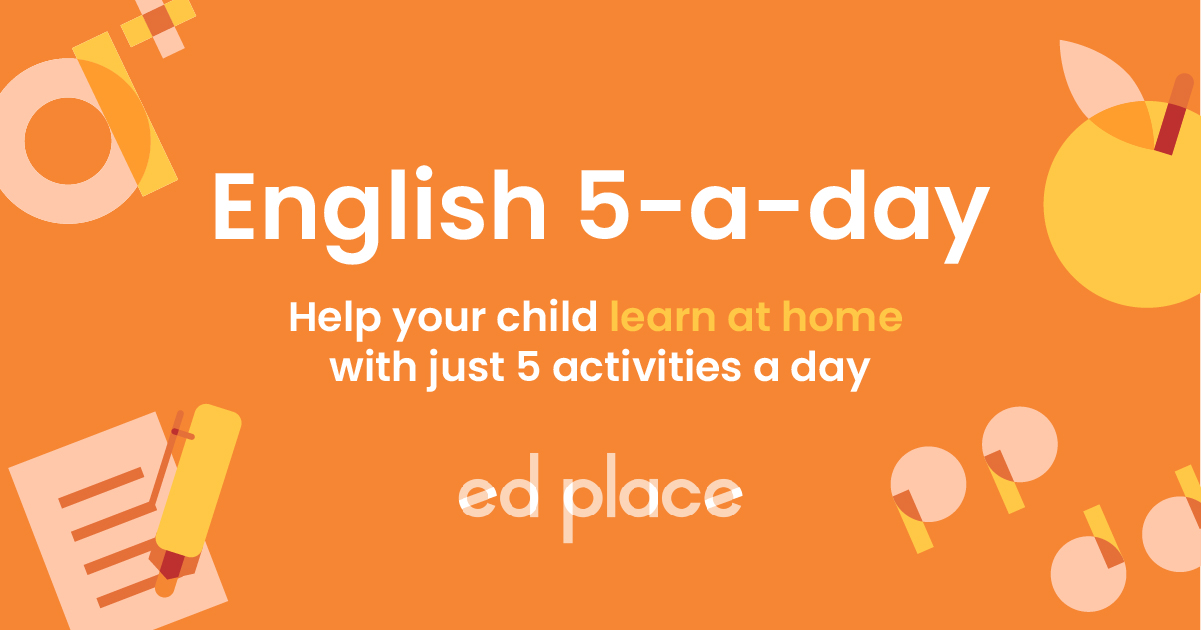
EdPlace's Year 3 and 4 Home Learning: Apostrophes for Possession
Looking for short lessons to keep your child engaged and learning? Our experienced team of teachers have created English, maths and science lessons for the home, so your child can learn no matter where they are. And, as all activities are self-marked, you really can encourage your child to be an independent learner. Get them started on the lesson below and then jump into our teacher-created activities to practice what they've learnt. We've recommended five to ensure they feel secure in their knowledge - 5-a-day helps keeps the learning loss at bay (or so we think!). Are they keen to start practising straight away? Head to the bottom of the page to find the activities.
Now...onto the lesson!
Need an Apostrophe Recap?
Mistakes with apostrophes are absolutely everywhere suggesting it's just something that only children find challenging! However, it doesn't need to be a cause of alarm for your child. Progress through the following steps together so that they get to grips with this common punctuation mistake. We'll look at a variety of uses of the apostrophe, including apostrophes for contraction, singular possession and plural possession... and if at this point this seems daunting... do not worry! We're confident that if your child understands the basics of apostrophes, then the trickier bits will be much less scary! Following this step-by-step process your child will be able to:
1) Understand how to use apostrophes and identify whether they are used for contraction or possession.
2) Identify whether they are used for contraction or possession.
3) Apply their learning through example questions, adding apostrophes to sentences where required.
Technical Terminology!
Before you begin, here's a list of some key terminology we'll be using. It's really important that children understand the terminology for apostrophes. Why not check their familiarity with the following terms:
Apostrophe – a punctuation mark to show contraction or possession
Contraction – shortening a word by combining two words together
Possession - ownership
Singular – one person or one thing
Plural – more than one
Step 1: Apostrophes for Contraction
This is a topic taught in Year 2, but it's definitely worth revisiting to ensure your child understands contractions before moving them onto apostrophes for possession. What is a contraction?
Apostrophes are used for a contraction to merge two words into one. The apostrophe replaces the missing letter(s). Here are some examples:
Do not = don’t
Could have = could’ve
Warning! Often children have the misconception that apostrophes go between the two words e.g. do’nt and does’nt, so do check the apostrophe is placed correctly. Let’s practice!
In the following sentences, find the words which could be joined together to form a contraction and write the contraction, thinking about where the apostrophe should be.
1) You are going to love the school trip today.
2) Mum asked, “Where is your school jumper?”
3) I think that I have been here before.
Step 2: Apostrophes for Singular Possession
It is vital here that children really understand that possession means that something or someone owns something. Often when children first learn about apostrophes, they add an apostrophe before every letter s in sight!! But they should now understand that we only need one if two words are pushed together (contraction) or someone/something owns something (possession).
Let’s start by focusing on singular possession – when one person/thing owns something. The easy part here is that you just need to add apostrophe + s (unless the word ends with an s). Make sure the apostrophe is in the word which owns something not the object which is owned. Here are some examples:
Mary’s lamb ran through the fields.
The duck’s egg began to hatch in the farmer’s field.
A child’s bag was found in the cloakroom.
Discuss these sentences with your child. Who owns what? E.g Mary owns a lamb. Give these a go with your child to see if they've got this?
Add the apostrophes for contraction or singular possession. Explain how you know that they are used for contraction or possession.
1) Alberts face lit up when he saw his birthday presents.
2) We havent got to Grannys house yet; it shouldnt be too much longer.
3) Whats wrong with your brothers computer?
Which apostrophes are not needed in the sentence below and why?
4) The toy’s were everywhere in Robert’s room; he hadn’t cleared up before coming downstair’s.
Step 3: Singular and Plural
To understand apostrophes for plural possession, children need to have a good grasp of singular and plurals and understand that we don’t always just add an ‘s’. A good place to start when explaining this concept is to get children to complete a table like the one below, the correct answers are in orange.
| Singular Noun | Regular Plural (add s) | Irregular Plural |
| Ball | Balls | |
| Child | Children | |
| Tooth | Teeth | |
| Eggs | Eggs | |
| Baby | Babies | |
| Woman | Women |
Step 4: Apostrophes for Plural
Filling in the table above is useful because we add an apostrophe after regular plurals to show possession and we add an apostrophe and an s (unless the word ends in an s) after irregular plurals to show possession. Have a look at the examples below:
All of the eggs’ shells were broken. – Eggs is a regular plural so we just need to add an apostrophe to show possession.
Three women’s bags were stolen. – Women is an irregular plural so we add an apostrophe and an s.
Many babies’ dummies are sold each year. – Babies is an irregular plural but it already ends in an s so we just add an apostrophe this time.
The Thumb Rule
A great rule for chidlren to use to check their work is the ‘thumb rule’: cover the apostrophe with your thumb and check that the noun before your thumb owns what comes after the thumb!
Let's have a look at how it works:
The 3 boys’ coats went missing. If we covered the apostrophe, we can check that 3 boys own the coats.
The childrens’ classroom was a mess. This is a common mistake – the classroom belongs to the children not the childrens so the apostrophe needs to be moved to make children’s.
Step 5: Persevere and Practice Possessive Apostrophes!
Now, we've covered this together why not assign your child the following 5 activities in this order to see how much they've grasped?
All activities are created by teachers and automatically marked. Plus, with an EdPlace subscription, we can automatically progress your child at a level that's right for them. Sending you progress reports along the way so you can track and measure progress, together - brilliant!
Activity 1 - Making Words Shorter: Using Apostrophes (3)
Activity 2 - Know Your Apostrophes: Possession and Contraction
Activity 3 - Know Your Apostrophes: Marking Possession 1
Activity 4 - Know Your Apostrophes: Marking Possession 2
Activity 5 - Know Your Apostrophes: Marking Possession 3
Step 1 Answers
1) You are = you’re
2) Where is = where’s
3) I have = I’ve
Step 2 Answers
1) Albert’s = possession (he owns his face)
2) Haven’t = contraction (have not), Granny’s = possession (Granny owns her house), shouldn’t = contraction (should not)
3) What’s = contraction (what is), brother’s = possession (your brother owns the computer)
4) ANSWER
Toys and downstairs – they are not two words pushed together and they do not own anything. They are plural nouns.








